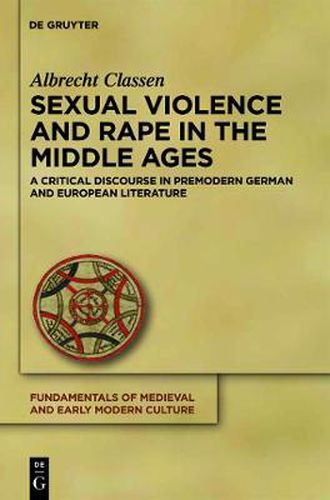Readings Newsletter
Become a Readings Member to make your shopping experience even easier.
Sign in or sign up for free!
You’re not far away from qualifying for FREE standard shipping within Australia
You’ve qualified for FREE standard shipping within Australia
The cart is loading…






This title is printed to order. This book may have been self-published. If so, we cannot guarantee the quality of the content. In the main most books will have gone through the editing process however some may not. We therefore suggest that you be aware of this before ordering this book. If in doubt check either the author or publisher’s details as we are unable to accept any returns unless they are faulty. Please contact us if you have any questions.
Medieval historians and literary scholars have not ignored the topic of sexual violence and rape, but the primary focus has regularly rested on English, French, or Italian documents. Here we have the first book-length study that investigates the treatment of sexual crimes in medieval and early modern German and Latin literature, making great efforts to shed light on often ignored scenes and episodes even in some of the ‘classical’ works such as Wolfram von Eschenbach’s Parzival or the anonymous Nibelungenlied. As this monograph reveals, many times we face situations where we cannot easily determine whether rape has occurred or not. Consequently, we recognize an important discourse in these literary examples concerning the question of how to view and deal with sexual violence, which could also involve men as victims. This critical examination extends toward sixteenth-century jest narratives (Schwanke) where the issue of rape continued to occupy the authors’ minds. Moreover, as numerous side glances to contemporary European literature indicate, the theme of sexual violence was of universal concern and critical importance during the entire premodern era.
$9.00 standard shipping within Australia
FREE standard shipping within Australia for orders over $100.00
Express & International shipping calculated at checkout
This title is printed to order. This book may have been self-published. If so, we cannot guarantee the quality of the content. In the main most books will have gone through the editing process however some may not. We therefore suggest that you be aware of this before ordering this book. If in doubt check either the author or publisher’s details as we are unable to accept any returns unless they are faulty. Please contact us if you have any questions.
Medieval historians and literary scholars have not ignored the topic of sexual violence and rape, but the primary focus has regularly rested on English, French, or Italian documents. Here we have the first book-length study that investigates the treatment of sexual crimes in medieval and early modern German and Latin literature, making great efforts to shed light on often ignored scenes and episodes even in some of the ‘classical’ works such as Wolfram von Eschenbach’s Parzival or the anonymous Nibelungenlied. As this monograph reveals, many times we face situations where we cannot easily determine whether rape has occurred or not. Consequently, we recognize an important discourse in these literary examples concerning the question of how to view and deal with sexual violence, which could also involve men as victims. This critical examination extends toward sixteenth-century jest narratives (Schwanke) where the issue of rape continued to occupy the authors’ minds. Moreover, as numerous side glances to contemporary European literature indicate, the theme of sexual violence was of universal concern and critical importance during the entire premodern era.